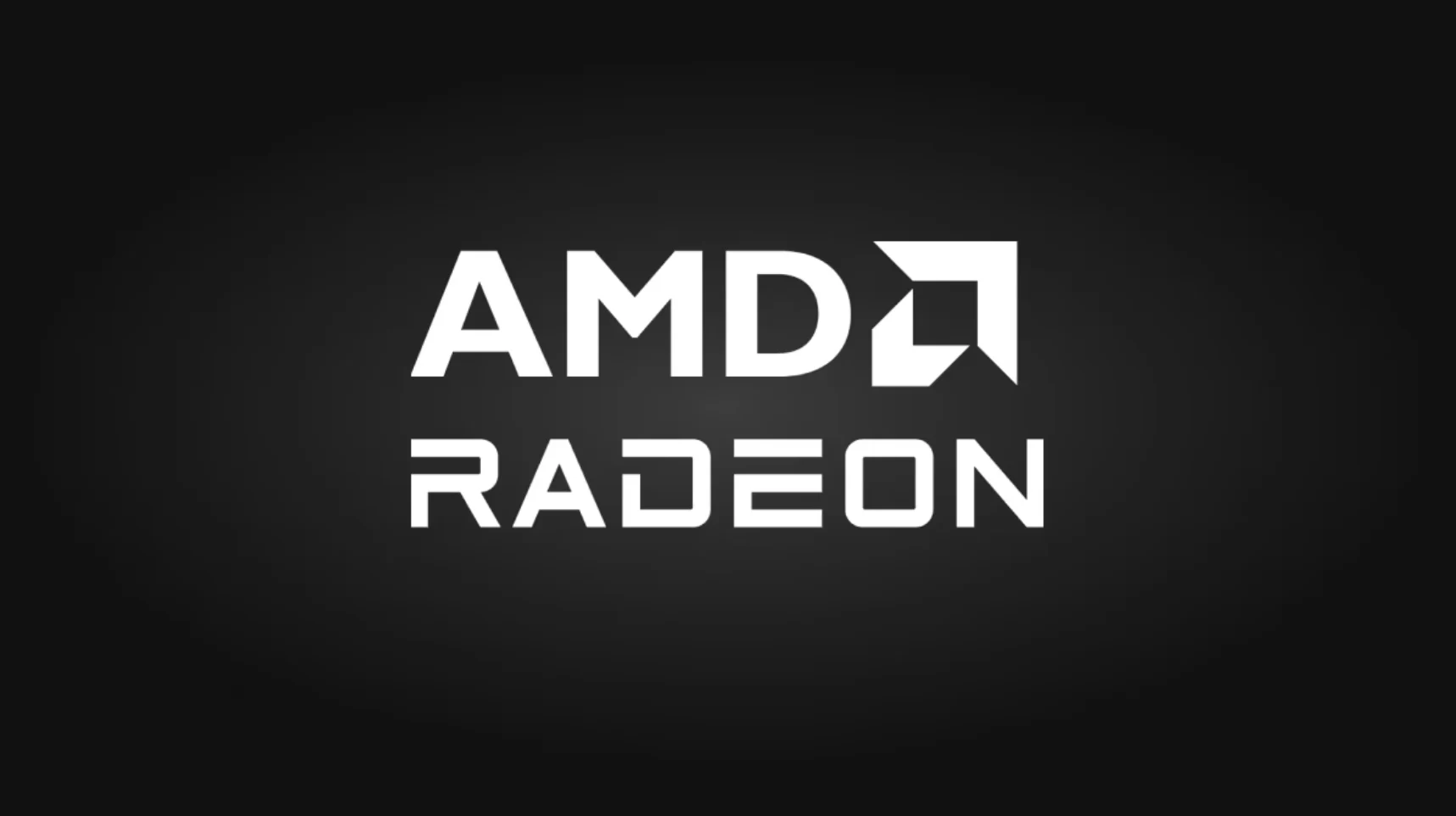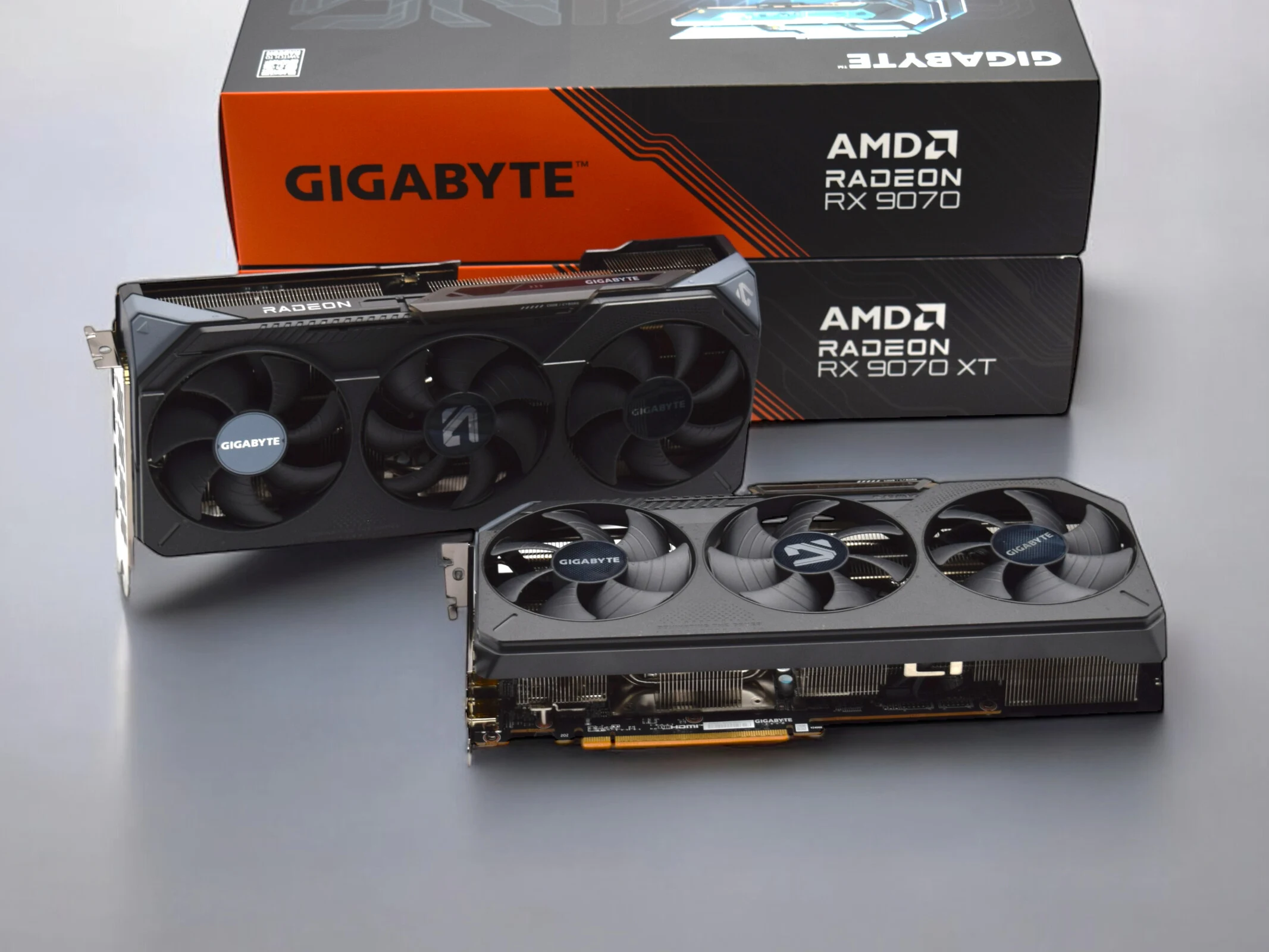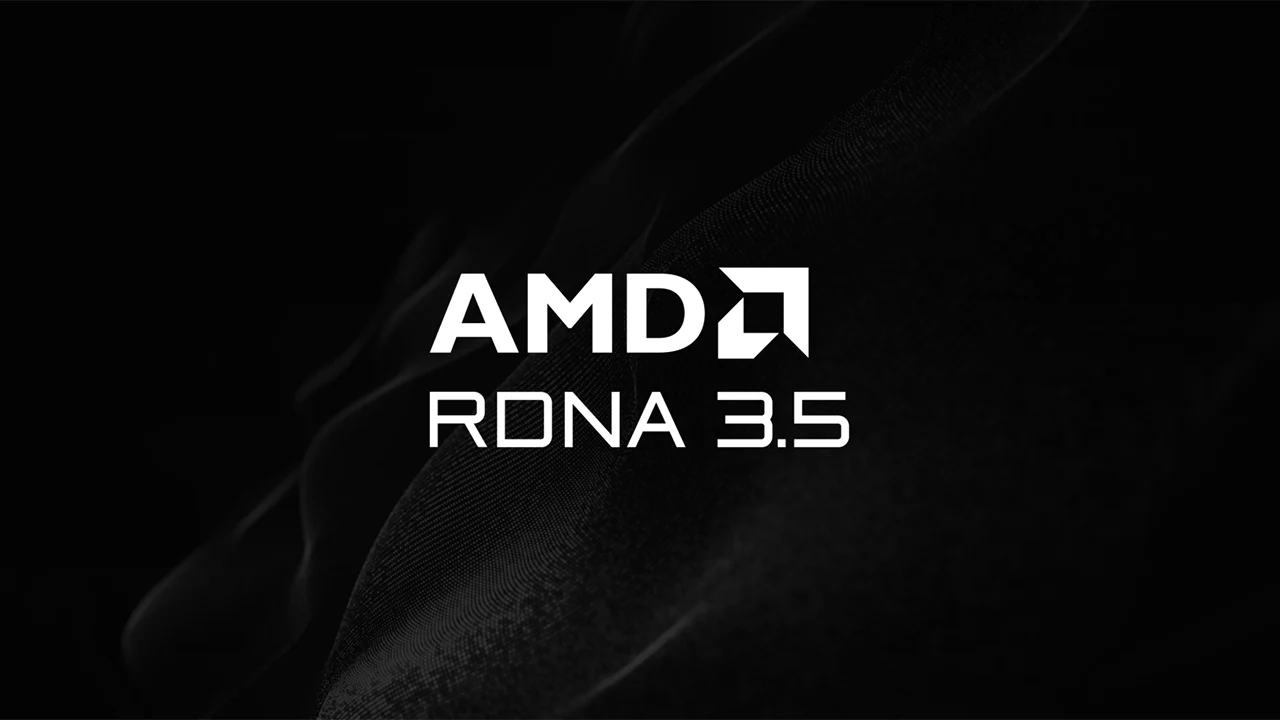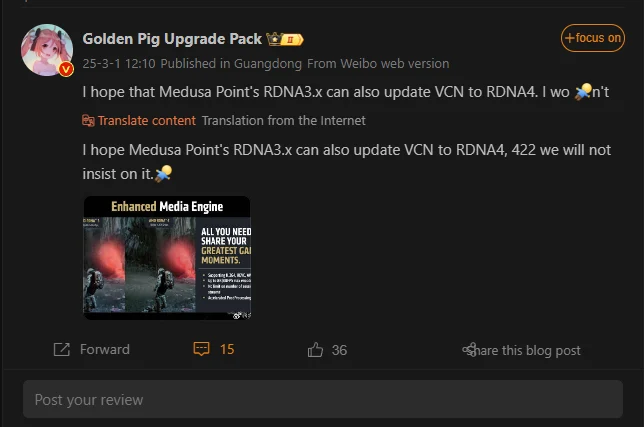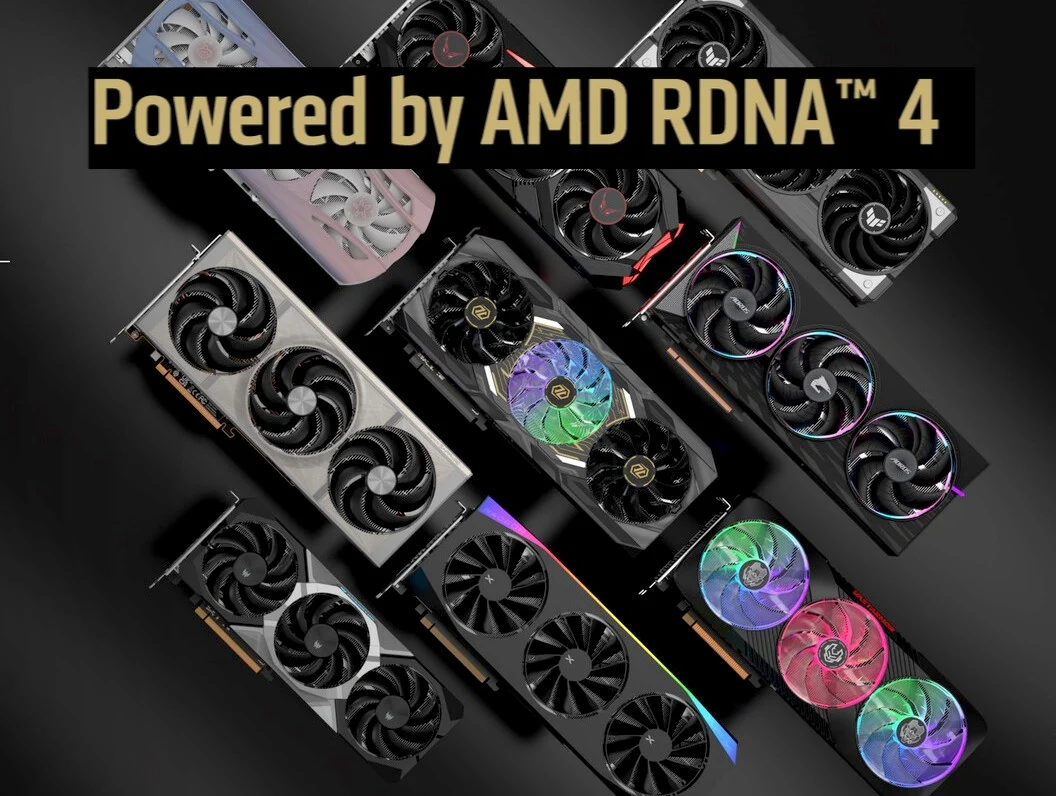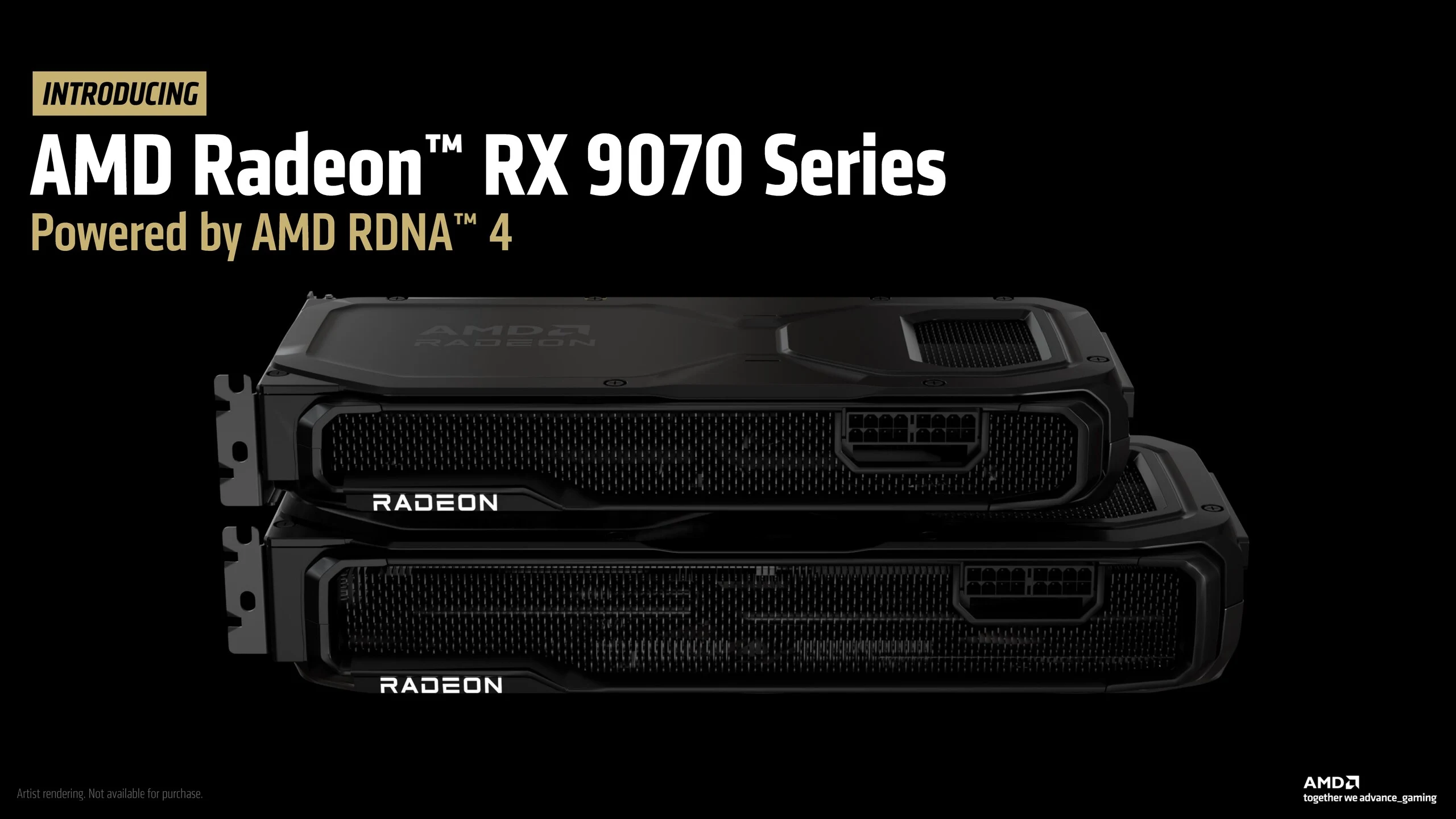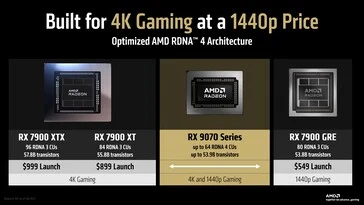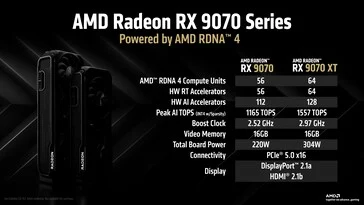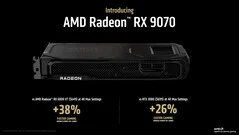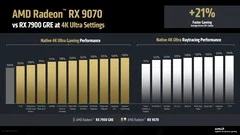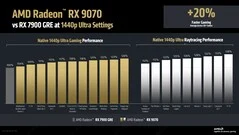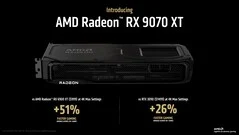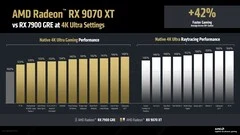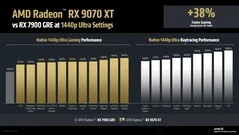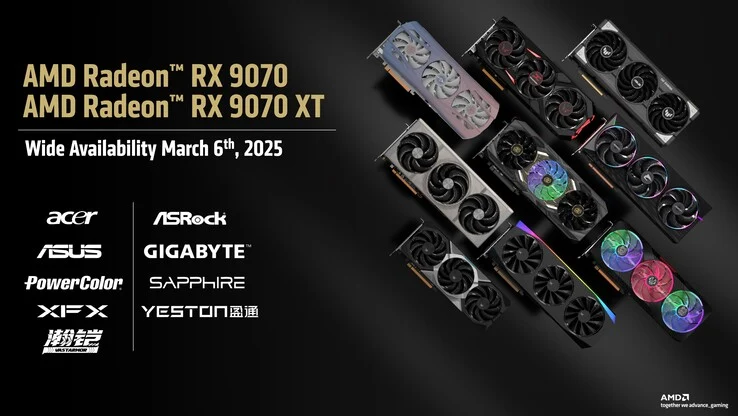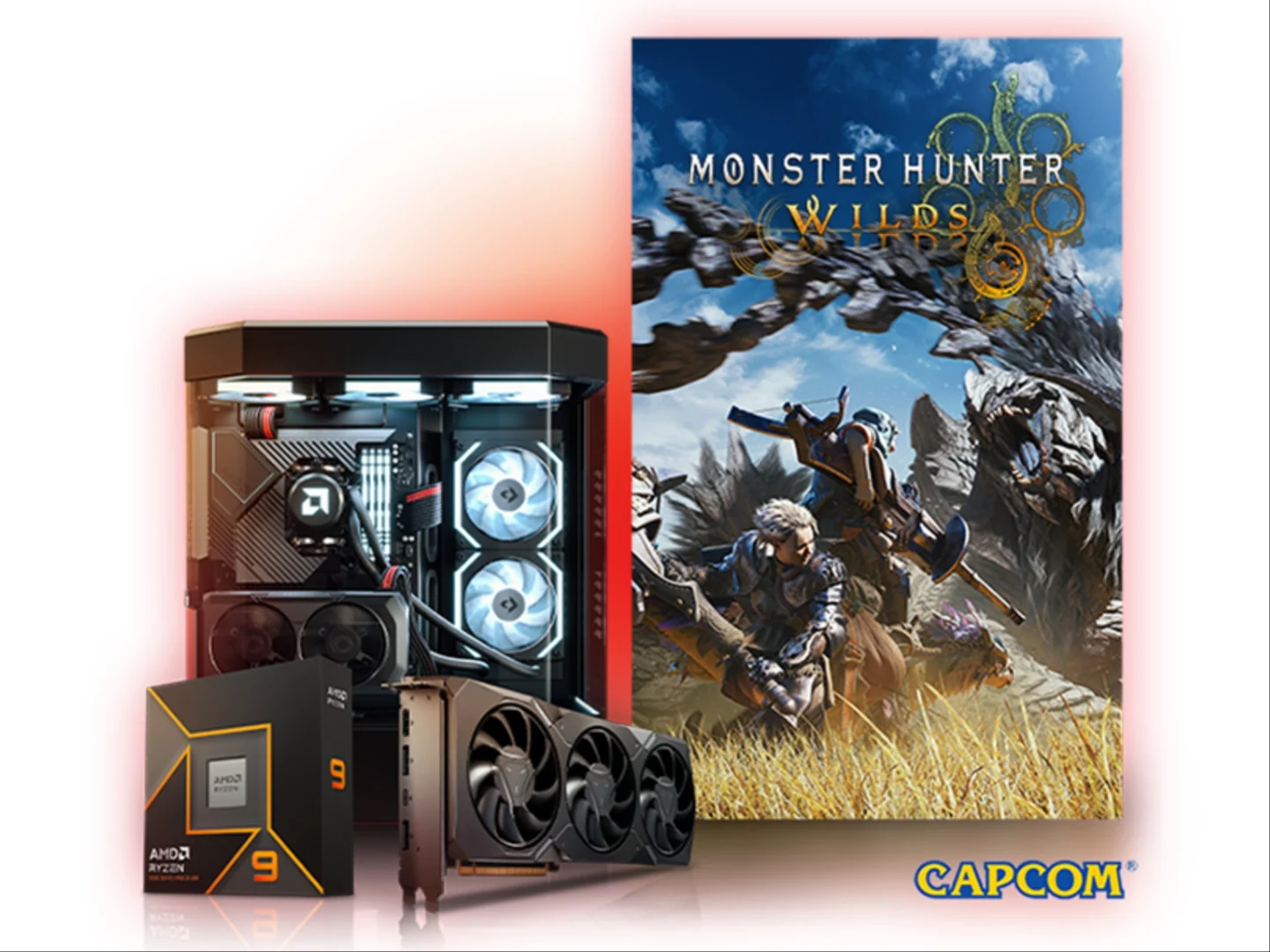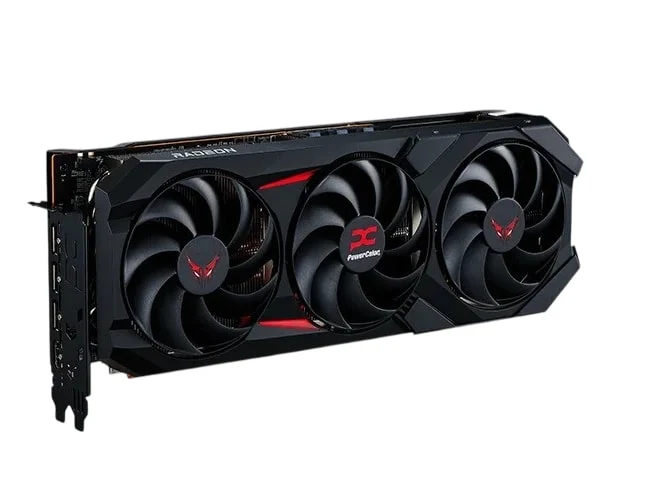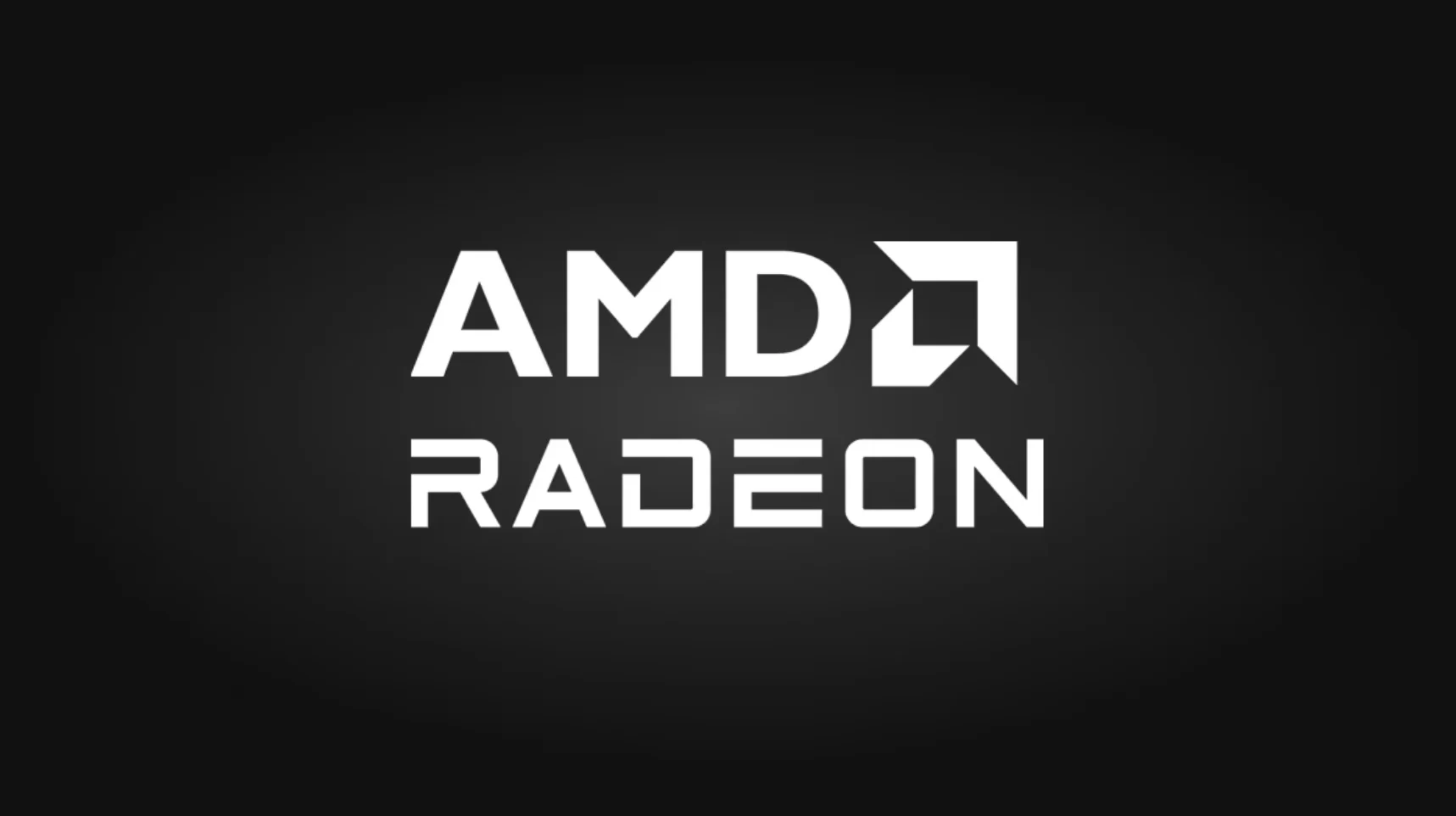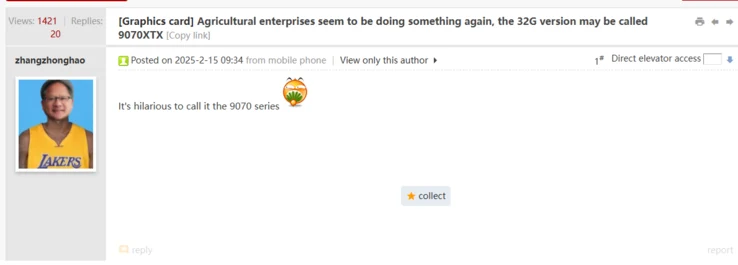Key Takeaways
1. AMD is launching the RDNA 4 architecture with the Radeon RX 9070 XT and RX 9070 graphics cards, focusing on the midrange market due to strong competition from Nvidia in the high-end segment.
2. The RX 9070 XT features 64 compute units, peak INT4 performance of 1,557 AI TOPS, and 16 GB GDDR6 memory, while the RX 9070 has 56 compute units and slightly lower specifications.
3. Both cards support PCIe Gen 5 x16 and HDMI 2.1b, with the RX 9070 outperforming the RX 6800 XT and RTX 3080 by significant margins in 4K gaming and ray tracing.
4. The RX 9070 XT is marketed as being 51% faster than the RX 6900 XT and 26% quicker than the RTX 3090; both models show impressive performance gains over the RX 7900 GRE.
5. The RX 9070 and RX 9070 XT will be available from various AMD partners starting March 6, with prices set at $599 and $549, respectively, but AMD will not offer Made by AMD cards for this launch.
AMD is launching its RDNA 4 technology with the new Radeon RX 9070 XT and Radeon RX 9070 graphics cards. This time around, AMD is taking a more cautious approach by focusing on the midrange market, as it seems more challenging to compete with Nvidia’s stronghold in the high-end GPU market. The release of the GeForce RTX 5090 has only increased the gap.
RDNA 4 Architecture Highlights
We have previously covered key features of the RDNA 4 architecture in a separate piece. The Radeon RX 7900 XTX and RX 7900 XT were designed for gamers focused on 4K resolution, while the RX 7900 GRE was tailored for 1440p gaming. With the RX 9070 XT and RX 9070, AMD aims to deliver a solid 4K gaming experience at prices that are more aligned with 1440p.
Specifications and Performance
The RX 9070 XT, the top model, includes 64 compute units (CUs) and can achieve a peak INT4 performance of 1,557 AI TOPS with Sparsity. Both models come equipped with 256-bit 20 Gbps 16 GB GDDR6 memory, providing a bandwidth of 640 GB/s.
With the new RDNA 4 architecture, both the RX 9070 XT and RX 9070 feature third-generation ray accelerators and AI accelerators. The RX 9070 XT can boost up to 2.97 GHz with a total board power (TBP) of 304 W, while the RX 9070, which has 56 CUs, can reach 2.52 GHz with a TBP of 220 W.
Competitive Edge
Both cards support a PCIe Gen 5 x16 interface and include the latest DisplayPort 2.1a and HDMI 2.1b outputs. AMD claims that the Radeon RX 9070 is 38% and 26% faster than the $649 RX 6800 XT and the $699 GeForce RTX 3080 when running at 4K. Compared to the RX 7900 GRE, the RX 9070 is on average 21% quicker, with a maximum of 28% higher performance in native 4K and up to 34% faster in ray tracing scenarios.
In 1440p resolution, the RX 9070 reportedly outperforms the RX 7900 GRE by as much as 26%, with ray tracing performance up to 38% higher.
AMD promotes the RX 9070 XT as being 51% faster than the $999 RX 6900 XT and 26% quicker than the $1,499 RTX 3090. Again, comparisons with the RX 7900 GRE reveal gains of up to 28% in native 4K and 34% in ray tracing.
Game Testing and Future Competition
At 1440p, the RX 9070 XT achieves similar performance improvements in native and ray tracing tasks as the RX 9070. All games were evaluated on an AMD Ryzen 7 9800X3D system with 32 GB of DDR5-6000, as noted in the fine print.
It’s still unclear how these cards will stack up against the GeForce RTX 5070 Ti and the anticipated RTX 5070, which is expected to be launched on March 5.
While AMD appears to be making strides to align its GPUs with midrange competition, the true test will come once we can evaluate the cards ourselves. Currently, Nvidia maintains a more robust software ecosystem.
Unlike Nvidia, AMD won’t be offering Made by AMD (MBA) cards for this launch. Nevertheless, AMD’s add-in board (AiB) partners, including Acer, Asus, ASRock, PowerColor, Gigabyte, XFX, Sapphire, Yeston, and Vastarmor, will have multiple designs of the RX 9070 and RX 9070 XT available starting March 6.
The AMD Radeon RX 9070 XT is set at a price of $599 SEP, while the RX 9070 is anticipated to retail for $549 SEP.
Source:
Link

